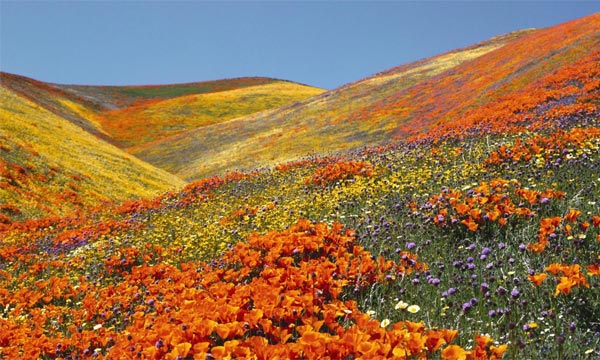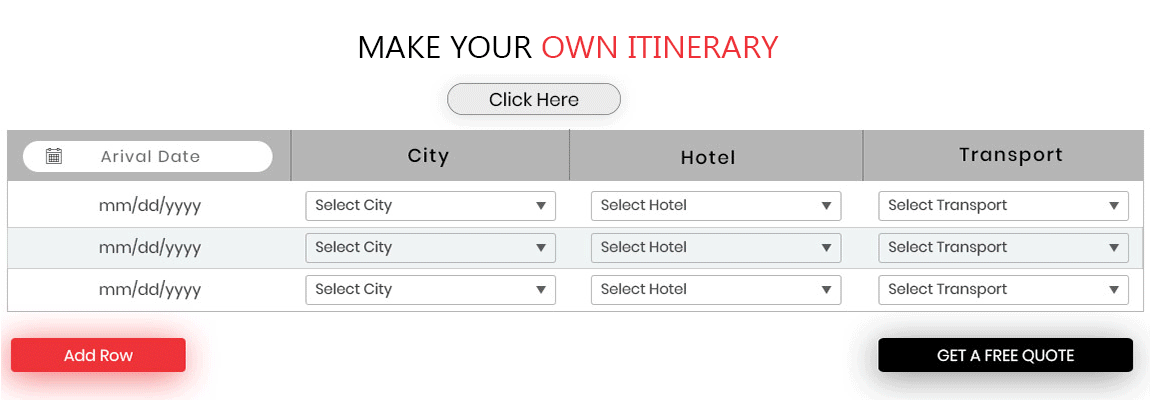7 Days |
Valley of Flowers Trekking Tour

Tour Overview
The name “Valley of Flowers” itself sounds interesting. The place located in the Uttarakhand valley of Himalayas is way more spectacular and mesmerizing than its name. The valley is recognized as a UNESCO World Heritage Site, and it has its own share of reason to be considered as the most beautiful valley in the entire Himalayan range.
The flora blossoms throughout the year bringing exclusiveness to the region. However, the monsoon season brings out the best of the valley both in terms of beauty as well as for trekking amidst the blossoming buds and titillating flowers all around the valleys in myriad of colors.The Valley of Flowers is exclusively best experience for the trekkers who find the ambience extremely energizing and rejuvenating.
Known for the endemic alpine flowers and outstanding natural beauty, the area is home to rare and endangered animals, including the Asiatic black bear, a snow leopard, brown bear and blue sheep.
The trekking tour begins from Delhi arrival, but the trekking starts at a pilgrim hamlet called GovindGhat – a little beyond Joshimath – and moves all the way ahead to a life-time experience trek to the Valley of Flowers and Hemkund.
Tour highlights
-
The Valley of Flowers with its spellbound beauty of flora that isn’t available everywhere.
-
Places like Haridwar, Devprayag and Govindghat known for their divine natural essence.
-
Joshimath – Shankaracharya Math, Narsinh Temple and Tapovan.
Itinerary
Welcome to Delhi, India. Right from the airport, you would be driven to Rishikesh in the morning which is a 7-hours long journey. On the way, you would be visiting Haridwar.
Located at the foothills of the Himalayas in northern India, Rishikesh is known as the“Gateway to the Garhwal Himalayas”. Haridwar is located around 25 kms from Rishikesh. It is regarded as one of the seven holiest places (SaptaPuri) to Hindus. This is manifested in the Kumbh Mela, which is celebrated every 12 years in Haridwar.
Reach at Rishikesh and spend overnight at hotel.
Start your morning with the freshness of Rishikesh – the hub of many mythological and legendary tales. Later that day, get driven to Rudraprayag via Devprayag. It is one of the PanchPrayag (five confluences) of Alaknanda River where Alaknanda and Bhagirathi rivers meet and take the name Ganga.Devprayag is famous for its natural beauty, surrounded by three heavenly peaks named GiddhanchalParvat, DashrathanchalParvat, and NarsinghancalParvat.
Reach Rudraprayag- best described as the "Abode of Gods" with majestic Himalayas, gushing water of the sacred rivers, and a rich variety of flora and fauna. Check-in at hotel for overnight.
Start on your way to Joshimath on road. After 4 hours or so, reach Joshimath and check-in at hotel. Joshimath is located at a height of 6150 feet and is the gateway to several Himalayan mountain climbing expeditions, trekking trails and pilgrim centers.
In the afternoon, you will be visiting Joshinath. The places to explore and visit are Shankaracharya Math (math established by AdiShankaracharya), Narsinh Temple (the main temple of Joshimath), Tapovan (natural hot water springs) and a ropeway to Auli, to name a few.
Stay overnight at Joshimath.
This day your trekking activities begin. You will be driven to Govindghat from where you start trek to Ghangaria (3000 mts). Ghangaria is situated at the confluence of the rivers Bhyundar Ganga and Pushpawati, which forms Lakshman Ganga, that later meets the river Alaknanda at Govindghat. It is the last human habitation in the Bhyundar valley. This place is usually used by travelers as a base camp to visit Hemkund and Valley of Flowers.
The trekking path is about 11 km. There is no clear road, only a path made of rocks which makes the trekking experience more challenging.
After breakfast, start trekking to the Valley of Flowers (3858 mts) from Ghangaria. The valley is an enchanting sight with an impressive array of rare wildflowers like Geranium, Marsh marigold, Prinula, Potentilla, Geum, Asters, Lilium, Ranunculus, Corydalis, Inula, Braham kamal, Campanula, Pedicularis, Arisaema, Morina, Impatiens, Bistorta, Ligularia, Anaphalis, Saxifrages, Sibbaldia, Thermo- psis, Trollius, Codonopsis, Dactylorhiza, Cypripedium, Str- awberry, Epilobium, Rhododendrons and numerous others.
Most of the flowers have medicinal values too. The valley is 10 kms long, 2 kms wide, and is divided by the Pushpawati stream, into which several tiny streams and waterfalls merge. After enjoying the beauty of valley trek back to Ghangaria.
Have dinner and stay overnight at the hotel.
Stepping down from Ghangaria to Govindghat is for 13 km. On reaching Govindghat, get driven for 5 hours to Rudraprayag. Check-in at hotel over overnight stay.
Start your journey back. You will be driven to Haridwar for the next 6 hours. At Haridwar, board Shatabdi express (18:15) to Delhi (22:45). On reaching Delhi, you would be driven to the airport to catch your return or onward flight.
Map










